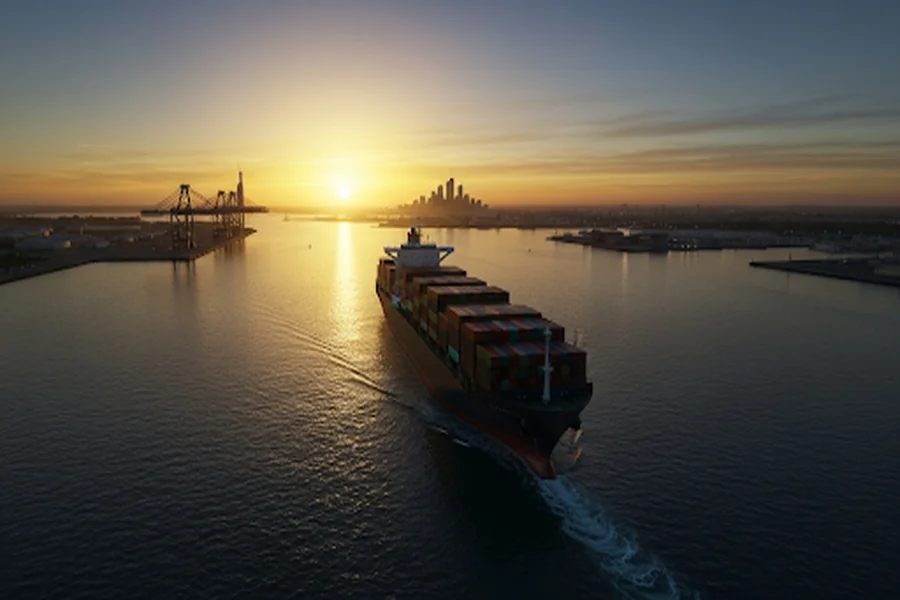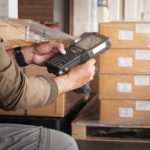Introduction
Navigating the world of international shipping can be complex, especially when it comes to customs clearance. If you’re importing goods into Australia, understanding the customs process is crucial for a smooth and timely delivery. This guide is here to demystify Australian customs for you. We’ll walk you through the essential steps, required documents, and expert tips to help you master the customs clearance process and avoid unnecessary headaches, ensuring your products arrive without a hitch.
Understanding Customs Clearance in Australia
Customs clearance is the official process of getting imported goods through customs so they can enter Australia. The Australian Border Force (ABF) manages this, ensuring all imports comply with laws and regulations.
Successful customs clearance means duties are paid, paperwork is complete, and your shipment is approved for entry. Let’s explore the key concepts you need to know.
Definition and Importance for Importers
Customs clearance is official permission from Australian authorities to allow imported goods into the country. The process starts when your cargo arrives and the required documents are lodged. Authorities review your shipment’s contents and value to ensure legality and accuracy.
This process is mandatory for all commercial imports. The key step is submitting an import declaration, supported by documents like a commercial invoice, so officials can verify details and assess duties or taxes.
Efficient clearance prevents delays, extra fees, or seizure of goods, ensuring your products move quickly to their destination and keeping your supply chain running smoothly.
How Customs Clearance Affects Businesses
The customs process can greatly affect your supply chain and budget. Border delays—often caused by incorrect paperwork or inspections—can lead to stock shortages, lost sales, and dissatisfied customers.
Customs clearance involves more than shipping fees; you must also consider duties, taxes, and government charges, usually based on the goods’ value and Harmonized System (HS) classification. As the Australian Border Force states, “All goods imported into Australia are liable for duties and taxes unless an exemption or concession applies.”
A professional customs broker can help you navigate regulations, ensure accurate declarations, identify concessions, reduce costs, and keep your supply chain running smoothly.
Key Documents Required for Imports
Accurate documentation is crucial for smooth customs clearance. Submitting complete, correct paperwork prevents delays and ensures you meet requirements. Key documents include the commercial invoice, packing list, and bill of lading—each serving a specific purpose. Have everything ready before your shipment arrives to avoid hold-ups.
Commercial Invoice and Packing List
The commercial invoice is crucial in international trade, serving as the main record of your transaction and helping customs determine the value of goods for duties and taxes. Errors can cause incorrect declarations and major issues.
Ensure your invoice is accurate and includes:
- A clear description of goods
- Total purchase price and currency
- Seller’s and buyer’s names and addresses
The packing list complements the invoice by detailing the shipment’s contents, including item descriptions, weights, and dimensions. This allows customs to verify cargo quickly without unpacking everything, speeding up inspections.
Bill of Lading and Air Waybill
The Bill of Lading (B/L) and Air Waybill (AWB) are essential transport documents that form a contract between shipper and carrier, prove ownership, and are required by customs for cargo release. Without them, your goods cannot be collected.
A Bill of Lading is used for sea freight and serves as:
- A receipt for shipped goods
- Proof of the carriage contract
- A document of title—whoever holds it can claim the goods
An Air Waybill is used for air freight. It acts as a contract of carriage but is non-negotiable, so it does not transfer ownership like a B/L. Freight forwarders typically manage both documents to ensure smooth cargo handling and clearance.
Certificate of Origin and Import Permits
A Certificate of Origin (COO) certifies where goods were manufactured and determines eligibility for preferential duty rates under Australia’s free trade agreements. Key points:
- The COO must be issued by an authorized body in the exporting country.
- Customs use it to verify eligibility for trade benefits.
Some goods require an import permit, especially restricted items like certain foods, plants, animal products, or medical goods. The Department of Agriculture, Fisheries and Forestry (DAFF) mandates these permits to protect biosecurity. Importing without a permit can cause delays, fines, or destruction of goods.
The Step-by-Step Customs Clearance Process
Understanding the step-by-step customs clearance process can make it less daunting. In Australia, the process moves logically from pre-arrival reporting to final goods release, with streamlined procedures that balance trade facilitation and security.
Each stage—document lodgement, duty payment, and possible inspection—has specific requirements. Here’s what to expect at each phase to help you prepare for a successful import.
Pre-Arrival Procedures and Documentation Review
The customs process starts before your goods arrive in Australia. Importers or brokers can speed up clearance by submitting accurate documentation early through the Integrated Cargo System (ICS).
Carefully review all documents to avoid common errors that cause delays. Key points:
- The commercial invoice must match the packing list.
- HS codes must be correct.
- Information must be consistent across all documents.
Prepare in advance to meet customs requirements and enable quick processing. Automated systems can help validate details, reduce errors, and flag issues before they cause delays.
Lodging Declarations and Paying Duties
Once your documentation is ready, lodge an Import Declaration with the ABF. This provides shipment details—value, origin, and classification—for customs to assess duties and taxes.
After acceptance, you’ll be notified of the total charges owed. Pay these before your goods are released. Key charges include duty, GST, and an Import Processing Charge.
Here’s a simple breakdown:
| Charge Component | Calculation Method |
| Customs Duty | Percentage (usually 0–5%) of customs value |
| GST | 10% of taxable importation (goods value + duty + transport) |
| Import Processing Charge | Fee based on entry type and shipment value |
Inspection and Release of Goods
Even with perfect paperwork, some shipments are randomly selected for physical inspection by the Australian Border Force or Department of Agriculture, Fisheries and Forestry (DAFF) to verify declarations and check for biosecurity risks.
Inspections may be triggered by:
- The type of goods (e.g., food, clothing, agricultural products)
- Random compliance checks
- Issues raised in documentation
After passing inspections and paying all duties and taxes, your shipment receives final customs clearance. Your customs broker or freight forwarder will then arrange collection and delivery, completing the import process.
Role of Customs Brokers and Freight Forwarders
Feeling overwhelmed by customs clearance? You don’t have to manage it alone. Customs brokers and freight forwarders handle regulations and paperwork, ensuring a smooth process.
Customs brokers offer expert clearance services, while freight forwarders coordinate your shipment’s logistics. Here’s how they can simplify importing for your business.
How Customs Brokers Simplify the Clearance Process
A licensed customs broker acts on your behalf with customs authorities to ensure your imports meet all legal requirements, making the process simpler for your business.
Working with a broker saves time and money by:
- Correctly classifying goods with HS codes for accurate duty calculation
- Preparing and submitting all declarations and paperwork electronically
- Advising on tariff concessions and other cost-saving opportunities
A broker handles administrative tasks, resolves issues, and keeps you informed, allowing you to focus on your business knowing your imports are in expert hands.
Freight Forwarder Support for Seamless Imports
A customs broker handles the legal declaration of your goods, while a freight forwarder manages their physical transportation. Freight forwarders organize international shipping from origin to destination, making them essential to your supply chain.
Many freight forwarders offer integrated services, including customs clearance, streamlining the import process by:
- Booking cargo on ships or planes
- Managing transport documents (Bill of Lading, Air Waybill)
- Coordinating with customs brokers for timely clearance
Combining logistics and customs with one provider increases efficiency, often lowers costs, and gives you better shipment visibility. This end-to-end approach ensures a smooth, synchronized import experience.
Tips to Ensure Hassle-Free and Efficient Import Clearance
Want smoother customs clearance? Follow best practices and take a proactive approach to avoid border delays. Prepare thoroughly, verify documentation, and communicate clearly with all parties for efficient processing.
Proactive Preparation and Communication
A proactive approach to customs clearance means preparing thoroughly from the start. Research your products and understand their specific requirements to avoid common delays.
Stay ahead by:
- Verifying Documentation: Check all paperwork—commercial invoice, packing list, etc.—for accuracy before shipment.
- Communicating with Your Supplier: Make sure your supplier meets Australian documentation standards.
- Engaging Experts Early: Involve your customs broker and freight forwarder early to plan and review documents.
Consistent communication with your supplier and logistics partners keeps everyone aligned and your supply chain running smoothly.
Conclusion
Customs clearance can seem daunting, but with the right knowledge and preparation, it becomes manageable. Understanding requirements and following key steps helps your imports arrive without delays. Familiarize yourself with essential documents and the customs process to empower your business in a competitive market. Proactive communication with customs brokers and freight forwarders further simplifies the experience. Adopt these practices to master customs clearance and improve import efficiency. Reach out for guidance anytime on your customs journey!
Frequently Asked Questions
What is the difference between import and export customs clearance?
Import clearance involves getting goods into a country, which requires lodging an import declaration and paying duties to Australian customs. The export process, on the other hand, involves declaring goods that are leaving the country. This is generally simpler and is focused on ensuring compliance with export controls and providing accurate trade statistics.
How long does it usually take for customs clearance in Australia?
For properly documented shipments, the customs clearance process with Australian customs can be very quick, often taking just a few hours. However, the clearance process for shipments requiring inspection or additional permits can take 24 to 48 hours or more, depending on the complexity and nature of the goods.
What are the key rules and regulations to consider for imports in Australia?
Key customs regulations include meeting biosecurity requirements set by the Department of Agriculture, correctly classifying goods, and paying all duties and taxes. It’s also vital to comply with Australian laws on restricted items and leverage any applicable trade agreements to ensure you meet all customs requirements and potentially reduce costs.






